11 Books Published by International Publishers on AALBC — Book Cover Collage
 Acknowledging Radical Histories
Acknowledging Radical Histories
by Gerald HorneInternational Publishers (Aug 25, 2023)
Read Detailed Book Description
In this collection of conversations, Dr. Horne confronts the history of settler colonialism and fighting fascism while giving dazzling insights on Jazz, Claude Barnett, Paul Robeson, W.E.B. Du Bois, and Shirley Graham Du Bois, while delivering deeper insights into the histories of Kenya, Zimbabwe, and South Africa. Chris Steele’s curiosity as an interviewer creates dialogues where Dr. Horne often braids his journeys into the archives with his scholarship often opening up into his own personal narrative. Part history, part radical memoir, Acknowledging Radical Histories displays the power of conversation, solidarity, and coming together for a better future.
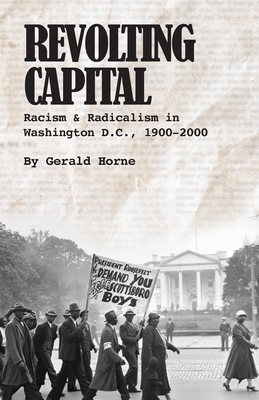 Revolting Capital
Revolting Capital
by Gerald HorneInternational Publishers (Apr 20, 2023)
Read Detailed Book Description
There is a fundamental contradiction in U.S. Imperialism: the capital of this empire for decades has had a majority Black population, which-in turn-has created favorable conditions not only for the erosion of the pestilence that is racism but the flourishing of the antidote that is radicalism.
In this sweeping history, Gerald Horne traces this phenomenon over a century, in a book which should be understood and studied by all anti-imperialist and progressive forces. This relatively small metropolis also has influenced profoundly its neighbors in Maryland and Virginia, especially in the potent area of labor organizing.
 The Counter Revolution of 1836: Texas slavery & Jim Crow and the roots of American Fascism
The Counter Revolution of 1836: Texas slavery & Jim Crow and the roots of American Fascism
by Gerald HorneInternational Publishers (May 11, 2022)
Read Detailed Book Description
When Mexico moved to abolish slavery, Texas seceded in 1836-in a replay of 1776— in order to perpetuate enslavement of Africans forevermore. Until 1845 Texas was an independent nation and moved to challenge the U.S. for leadership in the odious commerce of the African Slave Trade: Texas also competed vigorously with the U.S. in the dirty business of denuding Mexico by snatching California in the race to the Pacific and domination of the vaunted China market.
But Texas could not withstand pressure from abolitionist Mexico and revolutionary Haiti and joined the U.S. as a state-under questionable legal procedures-in 1845.
Thereafter Texas’ enslaved population increased exponentially along with land grabs targeting Comanches, Caddo and Kiowa-and other Indigenous nations-leading to staggeringly violent bloodshed.
But Mexico continued to support Indigenes and the enslaved, irking Texas, which then led the secession from the U.S. in 1861 in order to perpetuate enslavement of Africans forevermore-though a number of leaders in Austin wanted to avoid the resultant Civil War by moving southward and snatching Cuba, Nicaragua and points southward.
But weakened by conflict with the U.S., Mexico was then seized by France which then plotted with Texas to continue enslavement of Africans after the defeat of the rebels in 1865-and after "Juneteenth" of the same year.
Black troops helped to foil this deviltry but, alas, during the Reconstruction era-1865-1876-these same soldiers were at the tip of the spear as Indigenes were being pounded in West Texas as Black people were being pounded by the Ku Klux Klan in East Texas.
Texans were also in the vanguard during the scandalous 6 January 2021 insurrection on Capitol Hill and promises to be in the forefront as a unique U.S. fascism seeks to rise.
One lesson from Texas is that Repression was so severe because Resistance was so daunting-a lesson to keep in mind as this century unfolds.
 Communist Front? The Civil Rights Congress: 1946-1956
Communist Front? The Civil Rights Congress: 1946-1956
by Gerald HorneInternational Publishers (Sep 23, 2021)
Read Detailed Book Description
Communist Front? The Civil Rights Congress, 1946-1956 provides an essential analysis of one of the most important but understudied organizations of the twentieth century. This pivotal formation tirelessly advocated for the rights of Blacks, Communists, and other oppressed and marginalized groups; brought national attention to some of the most egregious frame-ups and miscarriages of justice, from Rosa Lee Ingram to Willie McGee; and helped to internationalize the struggle for Black liberation with the We Charge Genocide petition. It is no wonder, then, that as the Cold War heated up and anticommunist repression reached a fever pitch, the CRC came under constant government surveillance and attack that ultimately led to its untimely demise in 1956.
 American Negro Slave Revolts (50th Anniversary Edition)
American Negro Slave Revolts (50th Anniversary Edition)
by Herbert ApthekerInternational Publishers (Sep 01, 2021)
Read Detailed Book Description
Years ago, the controlling view held that the response of the slaves in the United States to their bondage “was one of passivity and docility.” That opinion, so decisive a part of the chauvinism afflicting the nation, is shown to be false in this book and in the material accumulated since its initial appearance has further substantiated this thesis; namely, that the African-American people, in slavery, forged a record of discontent and of resistance comparable to that marking the history of any other oppressed people.
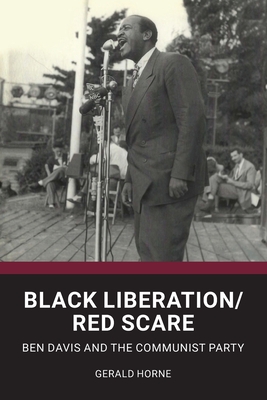 Black Liberation / Red Scare: Ben Davis and the Communist Party
Black Liberation / Red Scare: Ben Davis and the Communist Party
by Gerald HorneInternational Publishers (Mar 12, 2021)
Read Detailed Book Description
Black Liberation/Red Scare is a study of an African American Communist leader, Ben Davis, Jr. (1904-64). Though it examines the numerous grassroots campaigns that he was involved in, it is first and foremost a study of the man and secondarily a study of the Communist party from the 1930s to the 1960s. By examining the public life of an important party leader, Gerald Horne uniquely approaches the story of how and why the party rose and fell.
Ben Davis, Jr., was the son of a prominent Atlanta publisher and businessman who was also the top African American leader of the Republican party until the onset of the Great Depression. Davis was trained for the black elite at Morehouse, Amherst, and Harvard Law School. After graduating from Harvard, he joined the Communist party, where he remained as one of its most visible leaders for thirty years. In 1943, after being endorsed by his predecessor, Adam Clayton Powell, Jr., he was elected to the New York City Council from Harlem and subsequently reelected by a larger margin in 1945. Davis received support from such community figures as NAACP leader Roy Wilkins, boxer Joe Louis, and musician Duke Ellington. While on the council Davis fought for rent control and progressive taxation and struggled against transit fare hikes and police brutality.
With the onset of the Red Scare and the Cold War, Davis-like the Communist party itself was marginalized. The Cold War made it difficult for the U.S. to compete with Moscow for the hearts and minds of African Americans while they were subjected to third-class citizenship at home. Yet in return for civil rights concessions, African American organizations such as the NAACP were forced to distance themselves from figures such as Ben Davis. In 1949 he was ousted unceremoniously (and perhaps illegally) from the City Council. He was put on trial, jailed in 1951, and not released until 1956, when the civil rights movement was gathering momentum. His friendship with the King family, based upon family ties in Atlanta, was the ostensible cause for the FBI surveillance of Dr. Martin Luther King, Jr.
COINTEL-PRO, the counterintelligence program of the FBI, which was aimed initially at the CPUSA, made sure to keep a close eye on Davis as well. But when the civil rights movement reached full strength in the 1960s Davis’s controversial appearances at college campuses helped to set the stage for a new era of activism at universities.
Davis died in 1964. According to Horne, the time has now come when he, along with his good friend Paul Robeson and W. E. B. DuBois, should be regarded as a premier leader of African- Americans and the U.S. Left during the twentieth century.
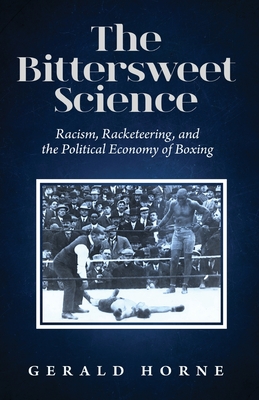 The Bittersweet Science: racism, racketeering and the political economy of boxing
The Bittersweet Science: racism, racketeering and the political economy of boxing
by Gerald HorneInternational Publishers (Nov 02, 2020)
Read Detailed Book Description
Based upon exhaustive research in court records, memoirs, the files of the New York State Athletic Commissions and related bodies from Nevada to New Jersey - not to mention the gangster venues from garish Las Vegas to venal South Philadelphia, this pioneering work tells the untold story of the grimy intersection of racism and racketeering in boxing. Revealing previously unrecorded stories of punchers from Jack Johnson to Joe Louis to Sugar Ray Robinson to Muhammad Ali, Horne also details a fascinating story of the waxing and waning of anti-Semitism. Toxic masculinity and other offshoots (including homophobia) are a major theme of this book and the author does not neglect women boxers—and wrestlers too—whose skills were honed in day-to-day battles with the pestilence that is male supremacy.
An intriguing chapter concerns—ironically—the mob’s chief executive in boxing in the 1950s, when profits piled up because of television broadcasts: Truman Gibson, a Negro, became the "fall guy", however, when a scapegoat was needed to take the blame for the fixed fights, the murderous attacks on those who refused to cooperate and the broken lives of what amounted to desperate workers eager to make a buck to support their starving families.
This book traces the story of Black dominance in the sport, from fighting enslavers in Africa, through the brutal "battle royals" of slavery when enslaved men were placed in a ring blindfolded and forced to fight until one man was left standing, while, at the same time, it exposes the gross exploitation of fighters and the gargantuan profits garnered by the likes of Don King, Bob Arum—and a former Atlantic City casino poseur named Donald J. Trump.
 White Supremacy Confronted: U.S. Imperialism and Anti-Communisim vs. the Liberation of Southern Africa, from Rhodes to Mandela
White Supremacy Confronted: U.S. Imperialism and Anti-Communisim vs. the Liberation of Southern Africa, from Rhodes to Mandela
by Gerald HorneInternational Publishers (May 09, 2019)
Read Detailed Book Description
Based upon exhaustive research in all presidential libraries from Hoover to Clinton, the voluminous archives of the African National Congress [ANC] at Fort Hare University in South Africa, along with allied archives of the NAACP, the Ford and Rockefeller fortunes, etc., this is the most comprehensive account to date of the entangled histories of apartheid and Jim Crow that culminated in 1994 with the election of Nelson Mandela as president in Pretoria. The author traces in detail the close ties between e.g. Mandela, Robeson, and Du Bois—among others—and how their working in tandem with the socialist camp (particularly the Soviet Union and Cuba) was the deciding factor (along with the struggles of Africans and their allies on both sides of the Atlantic) in compelling the reluctant retreat of the comrades-in-arms: apartheid and Jim Crow. However, weeks after the collapse of the Berlin Wall the apartheid regime chose to free Mandela and to legalize the ANC and its close ally, the South African Communist Party—while anticommunism, a major ideological weapon of the ruling class in Washington and Pretoria alike, surged—putting the Mandela government in a weakened position in the prelude to the nation’s first democratic elections in 1994 and thereafter. Also detailed in these riveting pages are the allied struggles in Namibia, Angola, Zimbabwe, Congo, Tanzania, Zambia and Mozambique, along with the massive solidarity movement in the U.S.—particularly among unions and students—that contributed mightily to victory. This is a story well worth studying as we continue to combat anticommunism—and struggle for socialism.
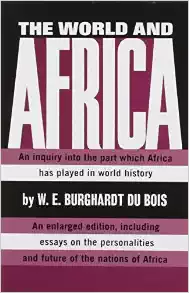 The World and Africa
The World and Africa
by W.E.B. Du BoisInternational Publishers (Jun 01, 1979)
Read Detailed Book Description
2015 Reprint of 1947 Edition. Full facsimile of the original edition, not reproduced with Optical Recognition Software. "Can the freedom-loving modern world close its eyes and ears to the exploitation by foreigners of a continent three times the size of Europe and four times that of the United States, and to the centuries-old oppression of its widely scattered people?" This is the question which the author raises in this work. To document his declarations concerning the injustices which have been meted out to blacks by their white exploiters, Dubois recounts the entire history of the continent-the vast contributions of ancient and modern Africa to world culture, industry and development, contributions that have often been overlooked by mainstream historians.
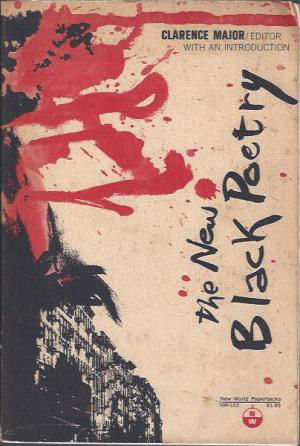 The New Black Poetry
The New Black Poetry
by Clarence MajorInternational Publishers (Mar 01, 1969)
Read Detailed Book Description
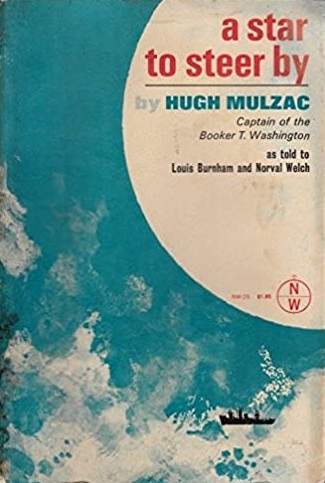 A Star to Steer: Captain of the Booker T. Washington
A Star to Steer: Captain of the Booker T. Washington
by Hugh MulzacInternational Publishers (Jan 01, 1963)
Read Detailed Book Description
In 1920 Mulzac joined Marcus Garvey’s Universal Negro Improvement Association (UNIA). Because of his history with seafaring vessels he was named a chief officer on the SS Yarmouth, one of the UNIA’s Black Star Line vessels.
As told to Louis Burnham and Norval Welch.
